Sustaining productivity virtually
strategy+business
|Winter 2020
Maintaining productivity levels among remote employees is an enduring challenge. Here are five ways to help businesses and employees thrive while people work at home.

How was lockdown for your teams? Are they feeling stressed and isolated? Or has working from home turned out to be a productive, com-mute-free, work-in-comfy-clothes revelation? One thing seems certain: This global, flexible-working experiment has changed our professional routines, probably for good. In PwC’s Remote Work Survey, conducted in June, 39 percent of U.S. executives said most of their office employees were working remotely at least one day a week before the pandemic. But during the COVID-19 crisis, almost everyone who could work exclusively from home did so.
Separate research conducted at the start of the lockdown found that three-quarters of executives judged the forced experiment a success, contrary to the expectations of many. Data collected at the beginning of the lockdown and through the more recent opening-up phase of the pandemic shows that productivity, despite an initial drop, soon improved during lockdown and got back on track (see chart on page 43). This finding is backed up by our spring surveys of chief financial officers; in March, 63 percent of business leaders were concerned that remote working would result in lost productivity, but by June, this number had fallen to just 26 percent.
The bottom-line results show steady or increased productivity — that’s the solid line in the chart showing an uptick — which on first reading looks like good news, but those results hide a potential problem that appears when you look harder at the data. There is greater variation around mean performance in the weeks after lockdown than before: The blue bands start widening as lockdowns are enforced. This suggests that productivity has been propped up by a cohort of superachievers (around one-third of the total sample), which has disguised a fall in productivity among the rest.
このストーリーは、strategy+business の Winter 2020 版からのものです。
Magzter GOLD を購読すると、厳選された何千ものプレミアム記事や、10,000 以上の雑誌や新聞にアクセスできます。
すでに購読者ですか? サインイン
strategy+business からのその他のストーリー

strategy+business
Transforming information into insight
Focus on six organizational elements to build a world-class data and insights capability.
8 mins
Winter 2020

strategy+business
THE URGENT NEED FOR SOPHISTICATED LEADERSHIP
The pandemic has highlighted a series of paradoxes inherent to the work of leaders. What comes next will depend on how well leaders face up to them.
14 mins
Winter 2020
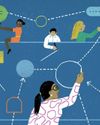
strategy+business
The road to successful change is lined with trade-offs
Rather than trying to convince people your change initiative is the right one, invite them to talk openly about what it might take to implement it: the good, the bad, and the frustrating.
15 mins
Winter 2020
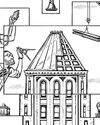
strategy+business
Sustaining productivity virtually
Maintaining productivity levels among remote employees is an enduring challenge. Here are five ways to help businesses and employees thrive while people work at home.
7 mins
Winter 2020
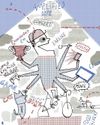
strategy+business
FORWARD TO normal
Entertainment and media companies are building business models that are resilient to the enduring changes in consumer behavior ushered in by COVID-19.
14 mins
Winter 2020

strategy+business
How leaders can promote racial justice in the workplace
Embrace four principles to turn today’s diversity, equity, and inclusion initiatives into sustained progress.
9 mins
Winter 2020

strategy+business
CREATING THE OFFICE OF THE FUTURE
In a remodeled world, it is vital for companies to reinvent ways of working.
11 mins
Winter 2020
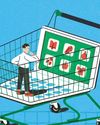
strategy+business
Consumer companies must take leaps, not steps
As shoppers show how quickly they can adapt to external shocks, retailers will need to radically reconfigure their business models.
7 mins
Winter 2020
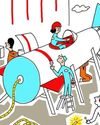
strategy+business
Businesses can fast-track innovation to help during a crisis
“Unrealistic” timelines can actually work. Here’s how.
5 mins
Winter 2020
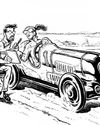
strategy+business
Agility and experience management work better together
Many companies achieve early wins with separate transformational efforts, then stall. But if combined and enhanced using “return on experience,” or ROX, measures, these two programs can unlock each other’s potential.
7 mins
Winter 2020
Translate
Change font size

